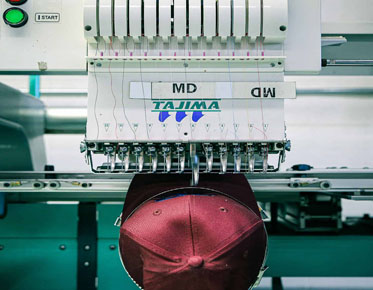What Are The Different Types of Embroidery Digitizing
Are you interested in embroidery digitization? Well, you’re
not the only one. The impact of technology on art and creative fields has been
increasing over time. ... The idea is to reduce human resources and improve
waste maps, which is committed to using paper. The same is true of embroidery.
Technology has also impacted this creative field.
We will learn about the types of
embroidery digitizing that will dominate the fashion and design industries in
2022.
What is embroidery digitizing?
Although they are often used
interchangeably, sewing and embroidery are not the same thing. Traditional hand
embroidery is a kind of needlework, in which patterns are manually sewn onto
fabrics or other materials using harnesses.
On the other hand, digital embroidery
is the process of using software to convert images or logo files into imprinted
patterns, so that the sewing machine can accurately copy the design. When
selecting the digital type of embroidery, we will consider the needs, design
and materials.
Digitization of plane embroidery
As the name implies, the embroidery is
simple and plain; It has no decorations and drunk toes. Flat embroidery is the
direct application of pattern stitching to the fabric backing. It is mainly
used for patterns with details and complex requirements in the whole design. In
addition, compared with other categories, the distortion is relatively small,
and the wrinkles of threads are also low.
3D puff embroidery
Create 3D puff embroidery by placing
the design under foam. This technology enhances design by giving it aesthetics
and a quality appearance. In addition, the size and appearance also make the
design more fashionable and popular. This digitization is very suitable for
simple logos and patterns that are essentially basic.
Chain stitch embroidery
A design that includes loops and
stitches to create a chain pattern is best suited for digitizing chain stitch
embroidery. Compared with other needle and thread digitization technologies,
this method is usually time-consuming and difficult, and the results may not be
very attractive. It also uses threads extensively.
On the positive side, digitizing chain
stitch embroidery can more easily produce strong texture lines, and ensure that
the chain pattern is accurate in the original artwork/design.
Chenille embroidery
You must have seen some fabrics and
some designs with fuzzy and comfortable appearance texture. This kind of fluff
is called Chenille embroidery; It is twisted from silk or wool yarn, giving it
a soft texture. This embroidery technology is supported by a felt backing,
making it sturdy and durable. Many customized digital online industries use the
Chenille Maker program to create patches.
Sequin embroidery
For sequin embroidery, the machine
must be equipped with a sequence distributor, which distributes them to the
target pattern through a systematic arrangement. Serial embroidery includes
plastic discs, materials, textured surfaces and, in most cases, high gloss.
This type is very famous in Asian countries because it reflects their culture
through vitality and luster.
Digital applique embroidery
Applique embroidery is made by placing
a designed cut cloth on another, more important piece of fabric. Stitching is
completed by using lines on the border with contrasting color lines, so that
the object pattern emits emphasized stripes. The digital technology of applique
embroidery is mainly used to decorate clothes and badges for organizations.
Photo digitization
Due to the digital method of photo
embroidery, the configuration on the cloth is similar to the portrait on the
canvas. Amplitude and tone changes of the design are provided by multi-layer
and multi-color stitches. The digitalization of photo stitch embroidery has
some unique attributes. For example, larger design dimensions and a large
number of stitches require manpower to handle such heavy loads.
Therefore, the digitization of
embroidery digitization software and photo splicing technology is used, and
patterns and coloring are professionally and tastefully implemented. The
digitalization of photos is indeed one of the remarkable innovations of this
era and looks promising.
freestanding lace embroidery
In this way, you can make decorations,
covers, and other items or accessories from cute, lightweight designs. Specific
digital patterns are sewn onto the water-soluble stabilizer by the machine as
shoelaces. After the pattern is formed, rinse the stabilizer to reveal the
attractive lace pattern. The design of the bride's dress has become beautiful
from independent lace embroidery.
Digitalization of wormhole embroidery
The hole is cut with boring tools,
including cutter and needle. This embroidery technique involves a lot of
machine intervention to cut the perfect and most delicate work without cutting
any lines. In addition, in order to cope with the roughness of the fabric, a
zigzag pattern is applied, or sometimes even satin stitching is sewn to cover
the lock frame.
It is said that the digitalization of
moth embroidery is one of the most delicate and challenging. Before making this
technology directly on clothing, you must have experience and some back-end
knowledge.
It is difficult to select the digital
type of embroidery. It requires extraordinary neatness, firm focus and flawless
ability, and depends on concepts, specifications, materials and some other
factors. Embroidery is no longer just art. It is now a symbol of your basic
beliefs, values and ideals.



